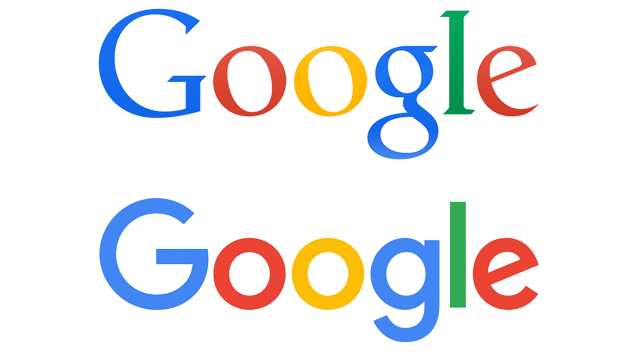marketers need to stick to their guns with regards to corporate rebranding.
October 6, 2015
In early September, Verizon unveiled a brand new emblem, phase of a larger rebranding effort aimed at projecting transparency in a product class known for complexity and opacity. in step with Michael Bierut, a associate at Pentagram, which created the brand new emblem, “simplicity, reliability, and focus on the client” was once the guiding spirit.

On Twitter, individuals had their own opinions.
@Jim_Brown, with a positive-tuned sense of nuance and share, tweeted, “the brand new @verizon logo could also be the worst factor I’ve ever viewed.” while @MikeESchmee seemed to suggest a Scarlet Letter-type shunning is also in order: “could you think about being pals or household with the individuals responsible for the brand new Verizon logo?”
no matter what the brand, if it has a brand new visible identification to announce to the sector, that you could guess social media will hate it. Thank god Paul Rand used to be by no means on Twitter. in any other case he most likely would have gone into insurance.
yet as far as i can tell, all this vitriol is in response to a single level of substance, one undeniable fact: the brand new logo is just not the previous logo. That’s it. that is mob vengeance exacted by way of people whose expertise derives from seeing Helvetica on Netflix. once the bien pensant critique gets rolling, you subscribe to the pile because . . . neatly, it’s what you do. and since it’s easy. nobody’s going to come after you for expressing everyone else’s opinion.
entrepreneurs are told they need to be responsive, to be all the time on. That social media demands they be “part of the dialog.” however what if the dialog is inane? After launching a new model identity, firms wish to keep the course, ignore the reflexive social media hate, and follow the plan they’ve laid out. because there’s a plan, generally the results of months of training and thought concerning the brand’s earlier and how the corporate needs it to be perceived at some point.
The day prior to Verizon announced its new emblem, Google presented theirs. The transfer, Google’s weblog defined, was driven by way of the new fact of how individuals have interaction with its merchandise: “We’ve taken the Google logo and branding, which were at first built for a single pc browser web page, and updated them for an international of seamless computing across an never-ending number of gadgets and different types of inputs.”

@Likeotters carefully considered the design constraints implied by using the range of cell display sizes and wrote, “Siri, why is the new google emblem so awful and gaudy?” (A Siri shaggy dog story! In 2015!) @Jacobunicyclist wrote: “i have officially forgiven Google for having a crappy new brand.” (Phew.)
Google could take inventory of the social media chatter, come to a decision they’re bored with taking a beating, revert to the outdated emblem, and be executed with it. That’s what the gap did in 2010, abandoning its emblem redesign after numerous beginner Vignellis tweeted mean issues.
“ok. We’ve heard loud and clear that you don’t like the brand new brand,” hole mentioned in a fb submit. “We’ve realized loads from the remarks. We handiest need what’s perfect for the brand and our clients.”
however what could they presumably have realized from the “remarks”? And shouldn’t the brand—now not the torch-and-pitchfork crowd—make a decision what’s very best for the emblem?
endurance isn’t extra of a virtue than in these situations. With a consistency you could set your watch to, emblem-rrheic outrage shall be forgotten sooner than the week is out. because inevitably, there’s some new nontransgression you’re supposed to fake insults you.
needless to say the backlash following Airbnb’s rebranding closing yr? at the time, individuals joked the brand new Airbnb emblem gave the impression of a vagina, or balls, or something. It’s so obvious, don’t you see it? smartly, no one talks about this anymore. in part because after a day or two, Twitter acquired bored and moved on. also, in all probability, as a result of after living with it for a while, folks determined . . . they preferred the brand. it works.

contrast the response of Nathan Blecharczyk, Airbnb’s cofounder, with the hole’s. “Go in advance, snigger all you need, guys,” he mentioned at the time. “We wouldn’t wish to design a logo that caters to the lowest in style denominator.” Blecharczyk was once criticized for being smug. His real offense? Refusing to let the mob make design selections for his company.
I’m no longer announcing brands by no means make mistakes, or that they must by no means listen to what the marketplace is telling them. In 2009, a redesign cost Tropicana millions in sales because the new washed-out seem of its packaging primarily rendered the logo invisible to supermarket consumers looking for orange juice. It’s exhausting to argue with mass rejection at the retailer shelf.
however mass rejection on Twitter? That’s simply a standard Monday. And Tuesday is a brand new day.
Chapin Clark is EVP, managing director, copywriting, at R/GA, the place he additionally serves as the voice in the back of @rga, the company’s Twitter deal with. Full disclosure: R/GA works or has worked with Verizon, Google, and Airbnb.
fast company , read Full Story
(64)